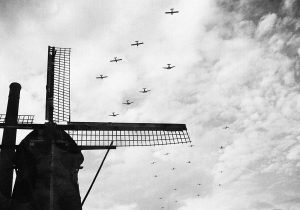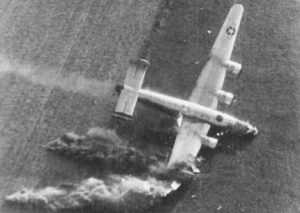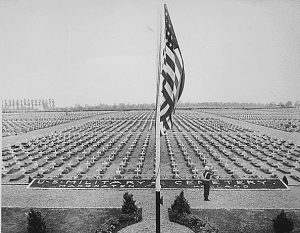 It has been 74 years since 17,740 Americans gave their lives to liberate the people of the Netherlands (often called Holland) from the Germans during World War II, and the people of Holland have never forgotten that sacrifice. For 74 years now, the people of the small village of Margraten, Netherlands have taken care of the graves of the lost at the Margraten American Cemetery. On Memorial Day, they come, every year, bringing Memorial Day bouquets for men and women they never knew, but whose 8,300 headstones the people of the Netherlands have adopted as their own. Of the 17,740 who were originally buried there, 9,440 were later moved to various paces in he United States by their families. “What would cause a nation recovering from losses and trauma of their own to adopt the sons and daughters of another nation?” asked Chotin, the only American descendant to speak on that Sunday 4 years ago. “And what would keep that commitment alive for all of these years, when the memory of that war has begun to fade? It is a unique occurrence in the history of civilization.”
It has been 74 years since 17,740 Americans gave their lives to liberate the people of the Netherlands (often called Holland) from the Germans during World War II, and the people of Holland have never forgotten that sacrifice. For 74 years now, the people of the small village of Margraten, Netherlands have taken care of the graves of the lost at the Margraten American Cemetery. On Memorial Day, they come, every year, bringing Memorial Day bouquets for men and women they never knew, but whose 8,300 headstones the people of the Netherlands have adopted as their own. Of the 17,740 who were originally buried there, 9,440 were later moved to various paces in he United States by their families. “What would cause a nation recovering from losses and trauma of their own to adopt the sons and daughters of another nation?” asked Chotin, the only American descendant to speak on that Sunday 4 years ago. “And what would keep that commitment alive for all of these years, when the memory of that war has begun to fade? It is a unique occurrence in the history of civilization.”
The people of Margraten immediately embraced the Americans, who had come to their aid when they needed it most. The town’s mayor invited the company’s commanders to sleep in his home, while the enlisted men slept in the schools. The protection against rain and buzz bombs was welcomed. Later, villagers hosted U.S. troops when the men were given rest-and-recuperation breaks from trying to breach the German frontier defenses, known as the Siegfried Line. “After four dark years of occupation, suddenly [the Dutch] people were free from the Nazis, and they could go back to their normal lives and enjoy all the freedoms they were used to. They knew they had to thank the American allies for that,” explained Frenk Lahaye, an associate at the cemetery.
By November 1944, two months after the village’s 1,500 residents had been freed from Nazi occupation by the U.S. 30th Infantry Division the town’s people were filled with gratitude, but the war wasn’t over. In late 1944  and early 1945, thousands of American soldiers would be killed in nearby battles trying to pierce the German defense lines. The area was filled with Booby-traps and heavy artillery fire. All that combined with a ferocious winter, dealt major setbacks to the Allies, who had already suffered losses trying to capture strategic Dutch bridges crossing into Germany during the ill-fated Operation Market Garden.
and early 1945, thousands of American soldiers would be killed in nearby battles trying to pierce the German defense lines. The area was filled with Booby-traps and heavy artillery fire. All that combined with a ferocious winter, dealt major setbacks to the Allies, who had already suffered losses trying to capture strategic Dutch bridges crossing into Germany during the ill-fated Operation Market Garden.
Now, the U.S. military needed a place to bury its fallen. The Americans ultimately picked a fruit orchard just outside Margraten. On the first day of digging, the sight of so many bodies made the men in the 611th Quartermaster Graves Registration Company ill. The bodies arrived in a procession of trucks and trailers. Death hung in the air over the whole village of Margraten. The sight of so much death caused a few of the people helping with the burials to become ill. They suddenly made a break for the latrines. The first burial at Margraten took place on November 10, 1944. Laid to rest in Plot A, Row 1, Grave 1: John David Singer Jr, a 25-year-old infantryman, whose remains would later be repatriated and buried in Denton, Maryland, about 72 miles east of Washington. Between late 1944 and spring 1945, up to 500 bodies arrived each day, so many that the mayor went door to door asking villagers for help with the digging. Over the next two years, about 17,740 American soldiers would be buried here, though the number of graves would shrink as thousands of families asked for their loved ones’ remains to be sent home, until 8,300 remained, and still, the graves are cared for by the town’s people, as if the dead were their own loved one. Not only that, but they have taken it upon themselves to research the deceased, and learn of their lives as a way of showing honor to these fallen heroes.
On May 29, 1945, the day before the cemetery’s first Memorial Day commemoration, 20 trucks from the 611th  collected flowers from 60 different Dutch villages. Nearly 200 Dutch men, women and children spent all night arranging flowers and wreaths by the dirt-covered graves, which bore makeshift wooden crosses and Stars of David. By 8am, the road leading into Margraten was jammed with Dutch people coming on foot, bicycle, carriages, horseback and by car. Silent film footage shot that day shows some of the men wearing top hats as they carried wreaths. A nun and two young girls laid flowers at a grave, then prayed. Solemn-faced children watched as cannons blasted salutes. The Dutch, Shomon wrote, “were perceptibly stirred, wept in bowed reverence.” All they do for these heroes is because they have vowed never to forget.
collected flowers from 60 different Dutch villages. Nearly 200 Dutch men, women and children spent all night arranging flowers and wreaths by the dirt-covered graves, which bore makeshift wooden crosses and Stars of David. By 8am, the road leading into Margraten was jammed with Dutch people coming on foot, bicycle, carriages, horseback and by car. Silent film footage shot that day shows some of the men wearing top hats as they carried wreaths. A nun and two young girls laid flowers at a grave, then prayed. Solemn-faced children watched as cannons blasted salutes. The Dutch, Shomon wrote, “were perceptibly stirred, wept in bowed reverence.” All they do for these heroes is because they have vowed never to forget.


4 Responses to Holland Never Forgot